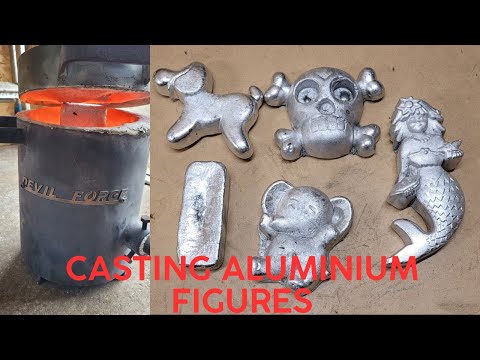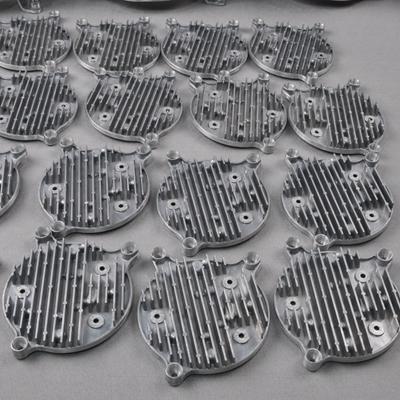About Stahl Specialty Company
About Stahl Specialty Company
Blog Article
The 7-Minute Rule for Stahl Specialty Company
Table of ContentsFascination About Stahl Specialty CompanyGetting My Stahl Specialty Company To WorkThe smart Trick of Stahl Specialty Company That Nobody is Talking AboutSee This Report about Stahl Specialty Company10 Simple Techniques For Stahl Specialty CompanyThe Ultimate Guide To Stahl Specialty Company

If you're making a steel product, you've likely considered utilizing light weight aluminum as the base product. Pure aluminum has limited applications, so it is typically integrated with other elements, such as silicon, magnesium, and manganese to form alloys.
Various elements and amounts produce a wide array of preferable physical and chemical homes. And the Light weight aluminum Organization (AA), based in The United States and copyright, has developed specs that control aluminum alloys' structure, buildings, and nomenclature. There are two kinds of light weight aluminum alloys wrought and cast. Factory workers develop these alloy enters different means, which considerably affects their characteristics.
Unknown Facts About Stahl Specialty Company
Cast aluminum alloys are made by thawing pure light weight aluminum and incorporating it with other steels while in liquid type. Then the mix is poured into a sand, pass away, or investment mold. After solidification, the steel is gotten rid of from its mold and mildew. At this stage, it remains in either its last kind or as a billet or ingot for further handling.

The 4th figure, which comes after the decimal factor, specifies if the alloy is a casting (xxx. Wrought aluminum alloys additionally begin by integrating molten aluminum with various other steels. In contrast to cast alloys, however, they are created right into their final shape via procedures such as extrusion, rolling, and bending after the metal has actually solidified into billets or ingots.
There are many minor differences in between wrought and cast aluminum alloys, such as that cast alloys can include more substantial quantities of other steels than wrought alloys. But one of the most significant difference in between these alloys is the construction process via which they will most likely to provide the end product. Other than some surface therapies, cast alloys will certainly leave their mold and mildew in almost the specific solid kind desired, whereas functioned alloys will undertake several alterations while in their solid state.
If you assume that a wrought alloy might be the very best for your job, have a look at a few of our articles that describe even more about details wrought alloys, such as Alloy 6061 and Alloy 6063. On the various other hand, if you think a cast alloy would certainly be better for you, you can find out more regarding some actors alloys in our Alloy 380 and Alloy 383 articles (coming soon).
A Biased View of Stahl Specialty Company
When picking a light weight aluminum foundry for your manufacturing requirements, it's vital to research several elements. One of one of the most important facets to take into consideration is the experience and competence of the foundry. Aluminum Casting. Choosing a foundry who has the right knowledge of the aluminum spreading procedure, and the profile to reveal for it, assists to have a successful result for your job
Having the experience and industry knowledge to engineer your spreadings for optimum manufacturing and high quality results will improve the project. Making light weight aluminum spreading needs a complex set of procedures to attain the ideal results. When choosing on a new light weight aluminum factory to partner with, ensure they have considerable sector experience and are experienced regarding all aspects of the light weight aluminum spreading process: layout, manufacturing, material evaluation, and item testing.
The shop must likewise have a proven track record of supplying phenomenal items that web link fulfill or exceed consumer assumptions. Quality control needs to likewise be at the top of your checklist when selecting a light weight aluminum factory. By working with a certified foundry that complies with the standards for high quality control, you can safeguard the honesty of your product and guarantee it satisfies your specifications.
By selecting a business that offers services that fulfill or surpass your product demands, you can be certain that your task will be completed with the utmost accuracy and performance. Different parts need various production methods to cast light weight aluminum, such as sand spreading or pass away casting.
How Stahl Specialty Company can Save You Time, Stress, and Money.
Die casting is the name provided to the process of creating complex metal components through usage of mold and mildews of the part, additionally called passes away. The procedure utilizes non-ferrous metals which do not include iron, such as aluminum, zinc and magnesium, due to the desirable residential properties of the metals such as low weight, higher conductivity, non-magnetic conductivity and resistance to deterioration.
Pass away spreading production is fast, making high production degrees of elements easy. It produces even more elements than any type of other procedure, with a high level of accuracy and repeatability. To get more information regarding die casting and pass away spreading materials used in the procedure, continued reading. There are three sub-processes that drop under the classification of die casting: gravity pass away casting (or irreversible mold and mildew casting), low-pressure die spreading and high-pressure die casting.
After the pureness of the alloy is evaluated, passes away are created. To prepare the passes away for spreading, it is essential that the passes away are tidy, so that no residue from previous productions continue to be.
Stahl Specialty Company Fundamentals Explained
The pure metal, also referred to as ingot, is added to the heater and maintained the molten temperature level of the metal, which is then transferred to the shot chamber and infused into the die. The stress is after that kept as the metal solidifies. Once the metal solidifies, the cooling process begins.
(https://www.huntingnet.com/forum/members/stahlspecialc.html)
The thicker the wall surface of the part, the longer the cooling time due to the quantity of indoor steel that also needs to cool down. After the part is fully cooled, the die halves open and an ejection system presses the part out. Following the ejection, the die is closed for the next injection cycle.
The flash is the additional product that is cast throughout the procedure. This must be trimmed off using a trim tool to leave just the primary element. Deburring gets rid of the smaller sized items, called burrs, after the cutting procedure. The component is polished, or burnished, to give it a smooth finish.
Get This Report on Stahl Specialty Company

Zinc is just one of one of the most pre-owned alloys for die casting due to its reduced cost of basic materials. It's additionally one of the stronger and steady steels. Plus, it has outstanding electrical and thermal conductivity. Its corrosion resistance additionally permits the components to be long-term, and it is just one of the more castable alloys because of its reduced melting factor - Aluminum Casting.
As pointed out, this alloy is just one of one of the most typically made use of, yet produces will, at times, choose light weight aluminum over zinc as a result of light weight aluminum's production advantages. Aluminum is extremely economical and among the much more functional alloys. Aluminum is used for a variety of various items and markets anything from window frameworks to aerospace materials.
Report this page